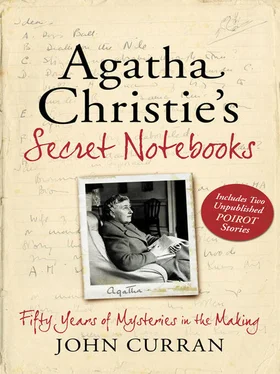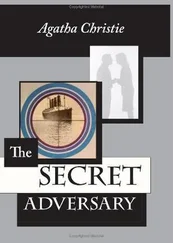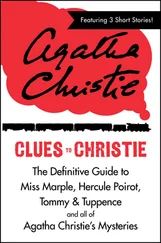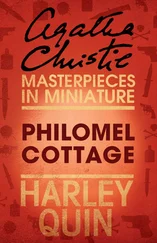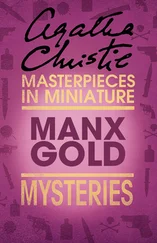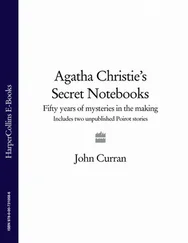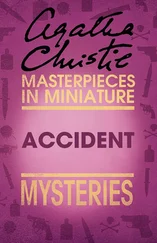The notes that follow, all from Notebook 47, form the basis of Dead Man’s Folly. Christie decided on a version of B below as the motivation and nobody called Lestrade features in either version:
Who wants to kill who
A. Wife wants to kill rich P Lestrade has lover—both poor
B. Young wife recognised by someone who knows she is married already—blackmail?
C. P Lestrade—has a first wife who is not dead—(in S. America?)—it is wife’s sister who recognises him
Czech girl at hostel? P mentions meeting a hostel girl ‘trespassing’—angry colloquy between them seen (but not heard) by someone—he decides to kill her
D. Mrs Folliat—a little balmy—or young Folliat at hostel?
Mrs Folliat of original family who built it—now belongs to Sir George Stubbs with beautiful young wife—Chilean girl?—Italian mother—Creole?—Rich sugar people—girl is feeble minded. Spread about that Sir G made his money in Army Contracts—really Sir C (a pauper) is planning to kill wife and inherit her money
The references to ‘Greenshore’ in the following extract would seem to confirm that Notebook 47 contains the original notes for the novella:
Does Sir George marry Hattie Deloran—she is mentally defective—he buys place ‘Greenshore’ and comes here with his wife—the night a folly has been prepared—she is buried. The Folly goes up the next day—another Lady Dennison [Stubbs] takes her place—servants see nothing—they go out for a stroll—other girl comes back (from boathouse). Then for a year Sir George and Lady Dennison are well known for guests. Then the time comes for Lady D to disappear—she goes up and down to London—doubles part with pretending to be a student
Sally Legge remains in the novel; the reason for the change of first name from Peggy was highlighted by Christie herself below. Definitely a good idea!
Points to be decided
A. Who first chosen for victim? Peggy Legge? Something about Old Peg Leg
B. What did Maureen [Marlene] know or do—heard grandfather talk about body and Sir George really being James? Or
Does she snoop? Intending to snoop on events? Really sees
Lady S change into hiker?
Or
See Sir George and his partner together?
What does Maureen write on Comic
Mrs O’s clue?
Boat house?
House boat?
Maureen’s scribble on the comic—G[eorge] S[tubbs] goes with a girl from the YHA
The following extracts, from Notebook 45, have page references, presumably to the proofs of ‘The Greenshore Folly’. The accompanying remarks are reminders to Christie herself, as she expands the original story. She also experiments with the details of Mrs Oliver’s Murder Hunt and clarifies, for herself, the timetable of the fatal afternoon:
P.119—Elaborate Mrs F’s remembering
P.21—A much elaborated scene in the drawing room at tea
P.24 Go on to Legges after ‘Hattie’
Recast order of next events
P.38 elaborate breakfast party—
P.47 Perhaps an interview with Michael Weyman at tennis Pavilion
Clear up point about Fortune teller’s tent
p.61 much more detail after discovery of body
Mrs Oliver’s plan
The Weapons
Revolver
Knife
Clothes Line
Footprint (in concrete)
Rose Gladioli or Bulb catalogue? Marked?
Shoe
Snap shot
Who? Victim
Why? Weapon
How? Motive
Where? Time
When Place
Scheme of afternoon—
4 pm P[eggy] L[egge] leaves tent
4.5 pm H [attie] tells Miss B to take tea
4.10 pm H goes into tent—out of back into hut—dresses as girl—goes to boat house
4.20 Calls to Marlene—strangles her then back and arrives as herself Italian girl—talks to young man with turtles [turtle-shirted competitor]
4.30 leaves with Dutch girl and pack on back or with turtle—Dutch girl goes to Dartmouth—Italian girl to Plymouth
Exhibit D: True Crime in the Notebooks
‘I have occupied myself of late in reading various real life unsolved mysteries. I apply to them my own solutions.’
The Clocks, Chapter 14
Agatha Christie wrote on two true-life murder cases, both of them very similar to her own fiction. ‘The Tragic Family of Croydon’ in the Sunday Chronicle of 11 August 1929 is an article about the then current and still unsolved Croydon poisoning case in which three members of the Sidney family were murdered, almost certainly by a member of their own household, in the space of a few months; and in October 1968 a short article by Christie appeared in the Sunday Times about the Charles Bravo murder, another domestic poisoning drama. And apart from fictional crime and its practitioners, Christie also refers in the Notebooks to a few real-life murder cases. Some are very well known but others are quite obscure:
Lizzie Borden
In Notebooks 5, 17 and 35 the infamous Lizzie Borden is mentioned during the plotting of Elephants Can Remember, They Do it with Mirrors and Five Little Pigs respectively. In 1892 in Fall River, Massachusetts, Mr and Mrs Andrew Borden were brutally murdered in their own home. Although their daughter Lizzie was tried for the murders, she was acquitted and to this day her guilt or innocence is a matter of intense speculation. In each case, as can be seen, it is the possibility of using a set-up similar to the Borden case—a domestic crime with the killer, in all likelihood, a member of the family—that attracts Christie:
Or Lizzie Borden family—father and mother killed—2 daughters—devoted sister in law—boy (nephew)—Harriet Irish maid
ambitious woman—rich (really a Lizzie Borden) married to 3rd husband
If not guilty who was? 4 (or 5) other people in house (a little like Bordens?)
Constance Kent
Notebooks 5 and 6, during the plotting of Elephants Can Remember and Nemesis respectively, refer to this notorious case. Constance Kent served 20 years for the murder of her three-year-old half-brother on 13 June 1860. She was released in 1885.
Constance Kent type of story—girl Emma—adored governess—mother dies. Governess who had apparently adored Emma now turns against her
Case of Constance Kent—had governess she adored—mother died. Governess married Father. She had a little boy—Constance very fond of him—he is found in earth closet—killed
Crippen and Le Neve
In Notebook 43 Eva Crane from Mrs McGinty’s Dead is compared to Ethel Le Neve, the partner of the notorious Dr Crippen. The reference to Crippen himself, in Notebook 56, appears during the planning of an unwritten book based on the discovery of a body some years after the commission of the crime. Crippen was hanged in 1910 for the murder of his wife Cora, whose body was discovered, buried in the cellar of their home—although recent forensic developments have cast some doubt on this verdict.
Janice [Eva in the book] Crane—former Ethel Le Neve—husband—Crane a bloodless lawyer whom she adores
Murder discovered afterwards—(5 years) (2 years) like Crippen?
Charles Bravo
In Notebooks 27 and 36, during the plotting of Third Girl and By the Pricking of my Thumbs, there is reference to this still unsolved murder. In April 1876, four months after marrying Florence Ricardo, Charles Bravo died an agonising death from antimony poisoning. A subsequent Coroner’s inquest found that there was insufficient evidence to identify his murderer. Again, Christie was using the basic situation as a starting point:
Arthur (innocent husband)—Katrina—suspicious, passionate for money—looks after old boy—she has boy friend…chemical research—or doctor—Bravo framework
Читать дальше
Конец ознакомительного отрывка
Купить книгу
